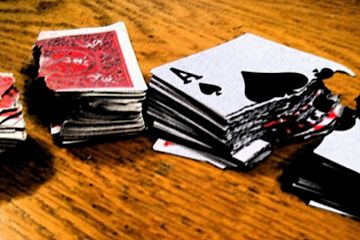On the Forums
I’m constantly amazed at just how much my training is influenced by the people on this site. Whether you’re looking for a new piece of equipment, an unusual exercise variation or just a training routine or two, head over to the forums :
Fight Geek’s Training Log
It’s always great to see how other people train. Here’s how Fight Geek does things.Mike F’s Training Log
More training goodness. Here’s what Mike’s getting up to.
NB : Ready to add your own workout log or training article? Just head over to the Articles & Logs page and log in, and click ‘Post to Your Blog’. That’s all there is to it.
Video - Weightlifting, Step 1
Considering giving Weightlifting a shot? Watch this - fantastic.
Coming Events
 Twitterchats : A couple of weeks ago, RKC Sandy Sommer helped us get started on the road to kettlebell training. This time he’s joining us to discuss some of the advanced training techniques to really crank your kettlebell training up a notch.
Twitterchats : A couple of weeks ago, RKC Sandy Sommer helped us get started on the road to kettlebell training. This time he’s joining us to discuss some of the advanced training techniques to really crank your kettlebell training up a notch.
Whether it’s a complex exercise, an integration with other tools, a challenge or a strength feat; if you love pushing yourself to the limit with a humble kettlebell, this is the place to be. Should be fantastic.
Details -
Who : Strength-training fans
Topic : Advanced Kettlebell Training
When : Wed Oct 7, 9pm EST (1am UTC)
How : include #sbgym in your tweets
To see when it’s on in your timezone, head over to the twitterchat calendar.
See you there.
NB : if you’d like to be a guest on an upcoming chat, get in touch. It’s always great to discover how other people are training.
Kettlebell Juggling Contest : how’s your kettlebell juggling? For details, head over here. Good stuff.
Card Tearing Contest : or a spot of card tearing perhaps? Now this one will be fun. Find out why.
Grip Contests : There are also several grip contests coming up shortly, including :
- Finnish Open Grip Strength Championships
- Super Gym - Rolling Thunder and CoC
For details - and to add an event - swing by the Grip Contest Calendar.
Exercise of the Week : The Inman Mile
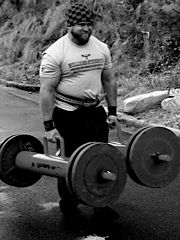 The Inman Mile is a great exercise; effectively a supersized version of a Farmers’ Walk. Although there are several variations (see below), the most common versions are :
The Inman Mile is a great exercise; effectively a supersized version of a Farmers’ Walk. Although there are several variations (see below), the most common versions are :
1.5 x bodyweight, barbell across shoulders : This is the version recognised by the USAWA, and occasionally appears at USAWA sanctioned events. Their definition is :
The lifter will have loaded onto his/her shoulders a weight equal to 150% of bodyweight. The lifter will then carry the weight a distance of one mile. Gait is optional. Resting is allowed, but neither the lifter nor the weight may be supported. Records will be kept in both pounds and time. Should the weight be touched by any aide once the lift has begun, the event is terminated. The lifter may be handed refreshments during the lift.
For obvious reasons, this is usually performed outdoors.
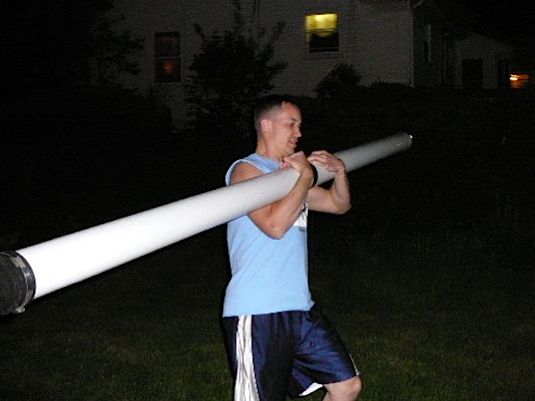
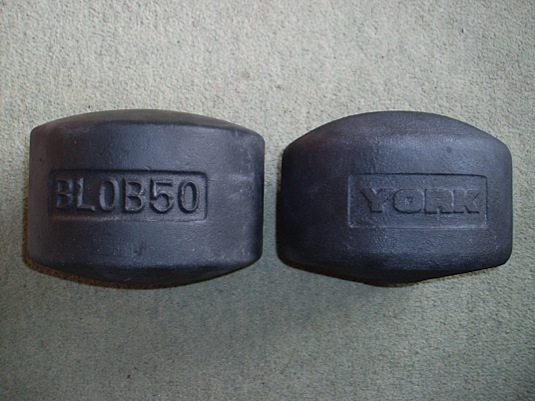
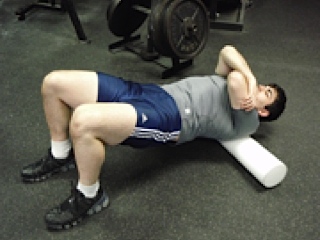
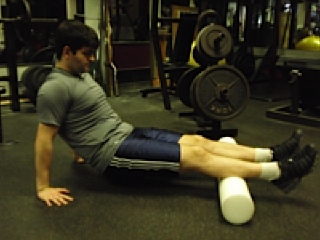
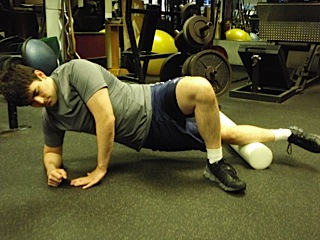
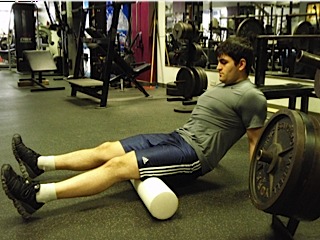
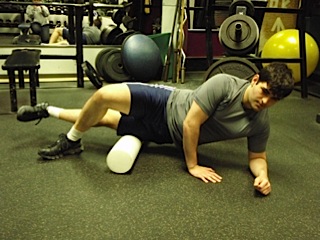
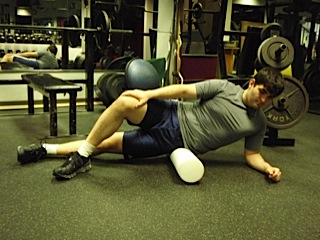
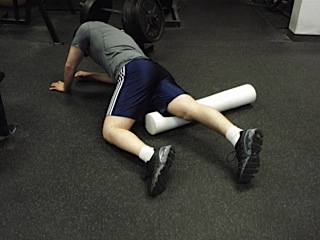
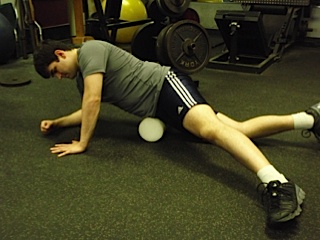
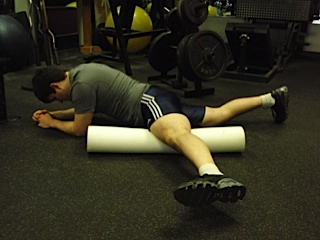
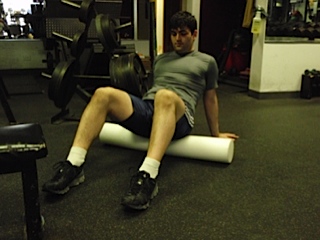
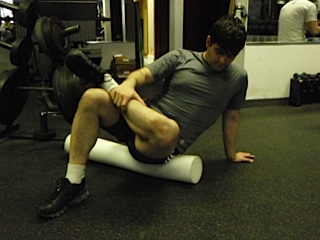
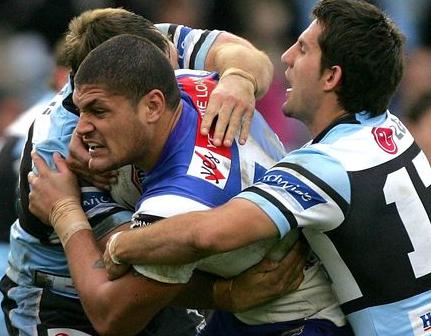
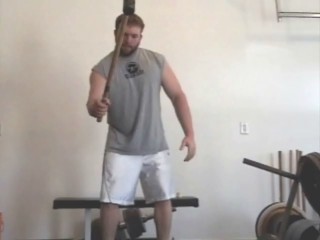
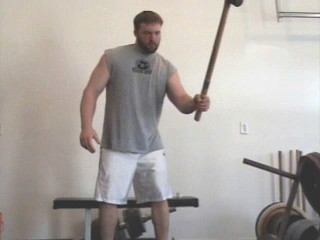 This may seem like a simple task, but the dynamic nature of this movement can make it very challenging to keep the hammer head elevated. With an 8-pound hammer, even a slight angle to the hammer makes it hard to control.
This may seem like a simple task, but the dynamic nature of this movement can make it very challenging to keep the hammer head elevated. With an 8-pound hammer, even a slight angle to the hammer makes it hard to control.  As you may have seen on the Diesel site, I recently added an addition to my house which caused large cinder blocks and concrete blocks to be deposited in my lawn. I have taken it upon myself to try to break up these blocks by hitting them with a 20-pound sledge hammer, and have found that this is an extreme exercise! Striking tires with a lighter hammer is one thing, but it does not compare to beating on a concrete slab with a giant 20-pounder! Each swing of the hammer wears out your core, shoulders, and chest, but it really does a number on your lower arms, wrists, and especially the thumbs.
As you may have seen on the Diesel site, I recently added an addition to my house which caused large cinder blocks and concrete blocks to be deposited in my lawn. I have taken it upon myself to try to break up these blocks by hitting them with a 20-pound sledge hammer, and have found that this is an extreme exercise! Striking tires with a lighter hammer is one thing, but it does not compare to beating on a concrete slab with a giant 20-pounder! Each swing of the hammer wears out your core, shoulders, and chest, but it really does a number on your lower arms, wrists, and especially the thumbs. 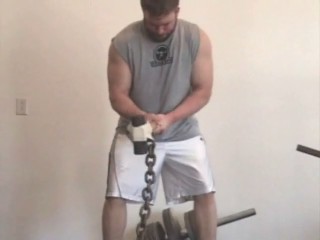 I am warning you right now, the exercise I am about to describe is freaking serious. If you are not committed to building the strongest wrists possible, then don't try this. Any weakness of the mind, heart or spirit will cause you to fail.
I am warning you right now, the exercise I am about to describe is freaking serious. If you are not committed to building the strongest wrists possible, then don't try this. Any weakness of the mind, heart or spirit will cause you to fail. 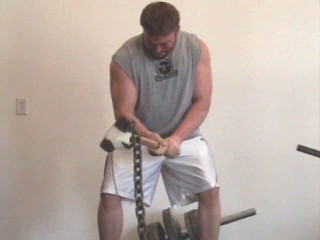 I am telling you, this exercise is freaking tough. I use an 8-pound hammer with a thick chain, making it very challenging. I did this the other day and felt it from my finger tips all the way through my arms and into my shoulders. Two days later, and my supinator muscles are still fried! Be sure to twist in both directions in order to maintain balance in the antagonistic muscles. This exercise is a keeper!
I am telling you, this exercise is freaking tough. I use an 8-pound hammer with a thick chain, making it very challenging. I did this the other day and felt it from my finger tips all the way through my arms and into my shoulders. Two days later, and my supinator muscles are still fried! Be sure to twist in both directions in order to maintain balance in the antagonistic muscles. This exercise is a keeper!